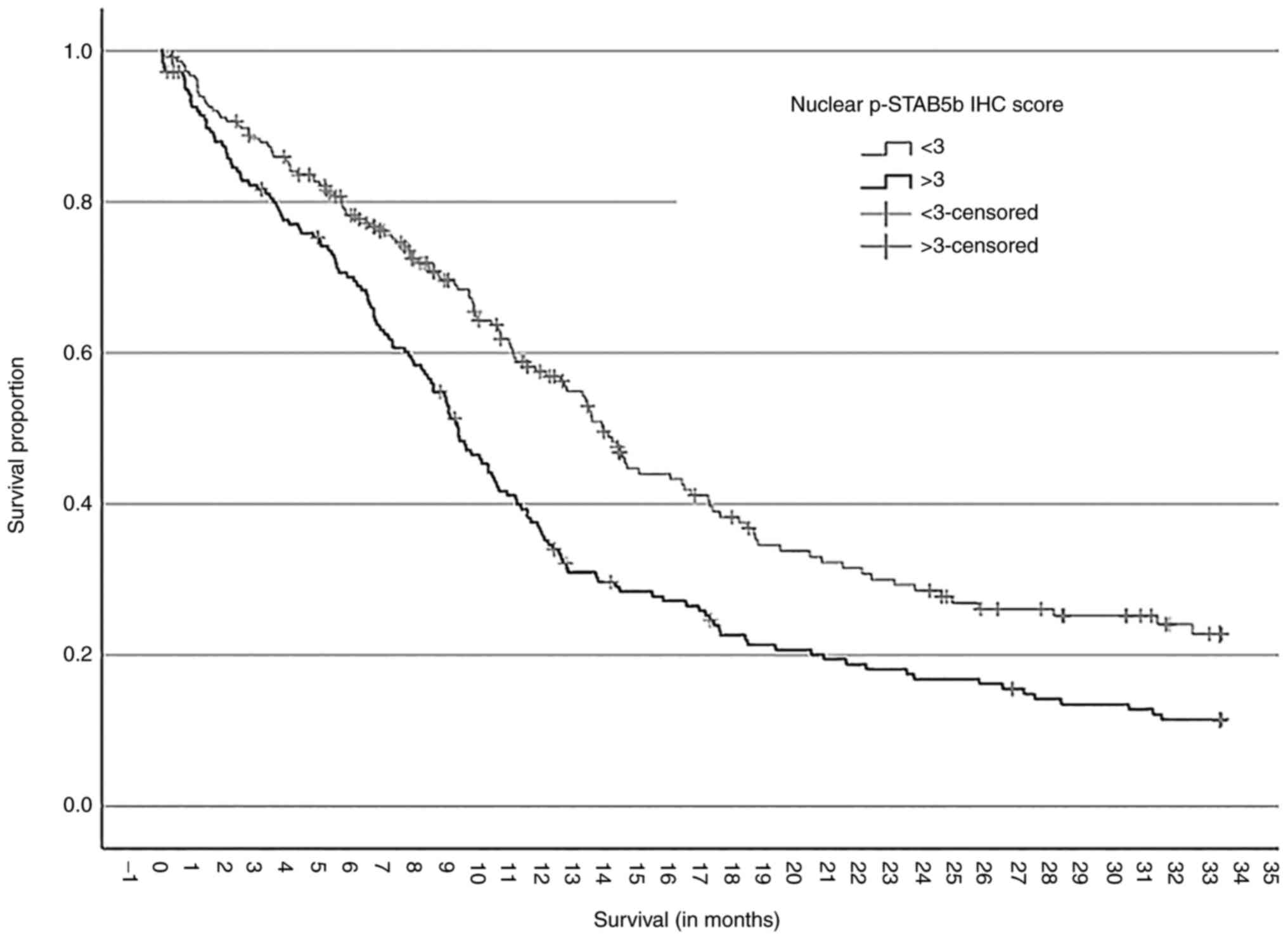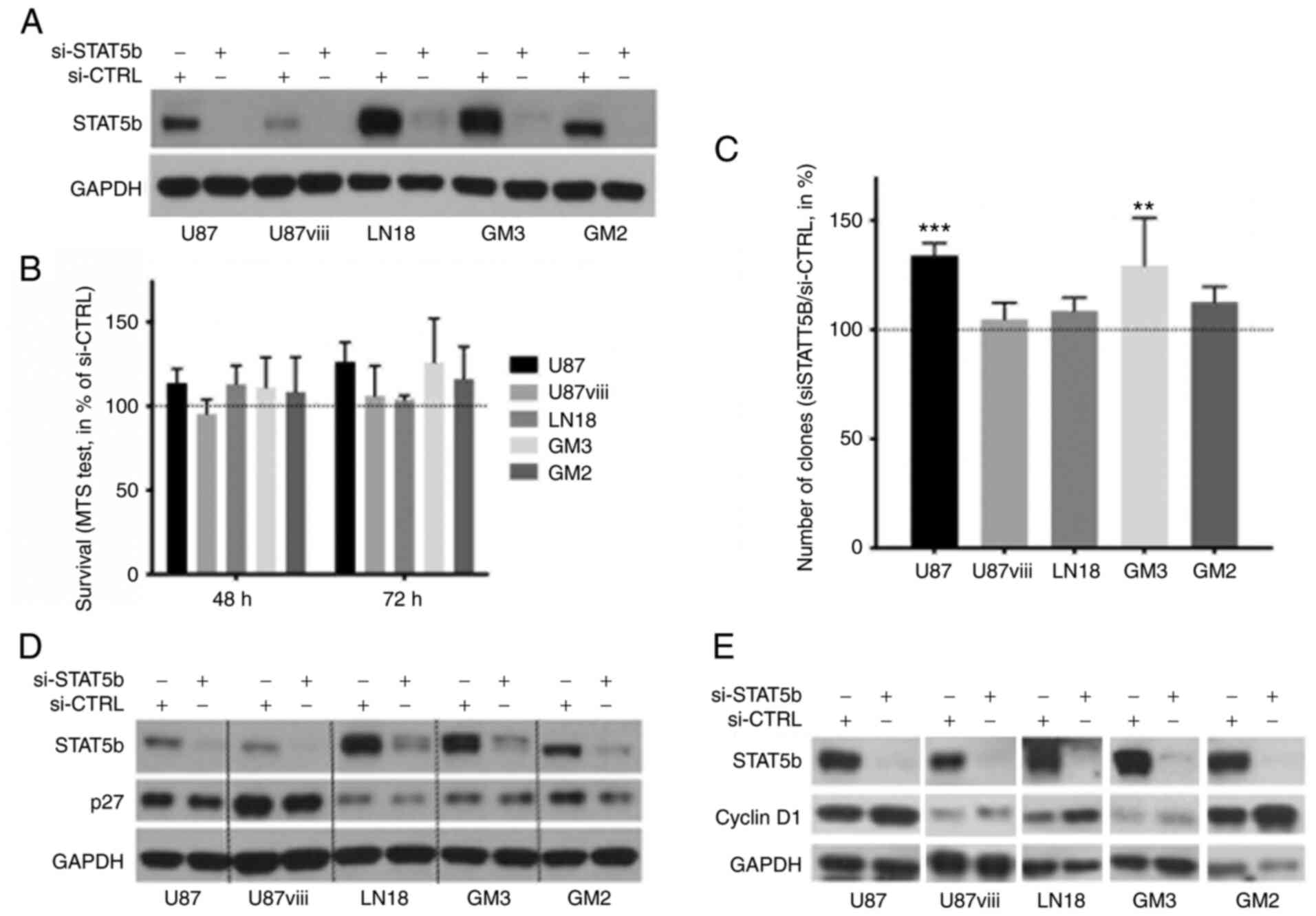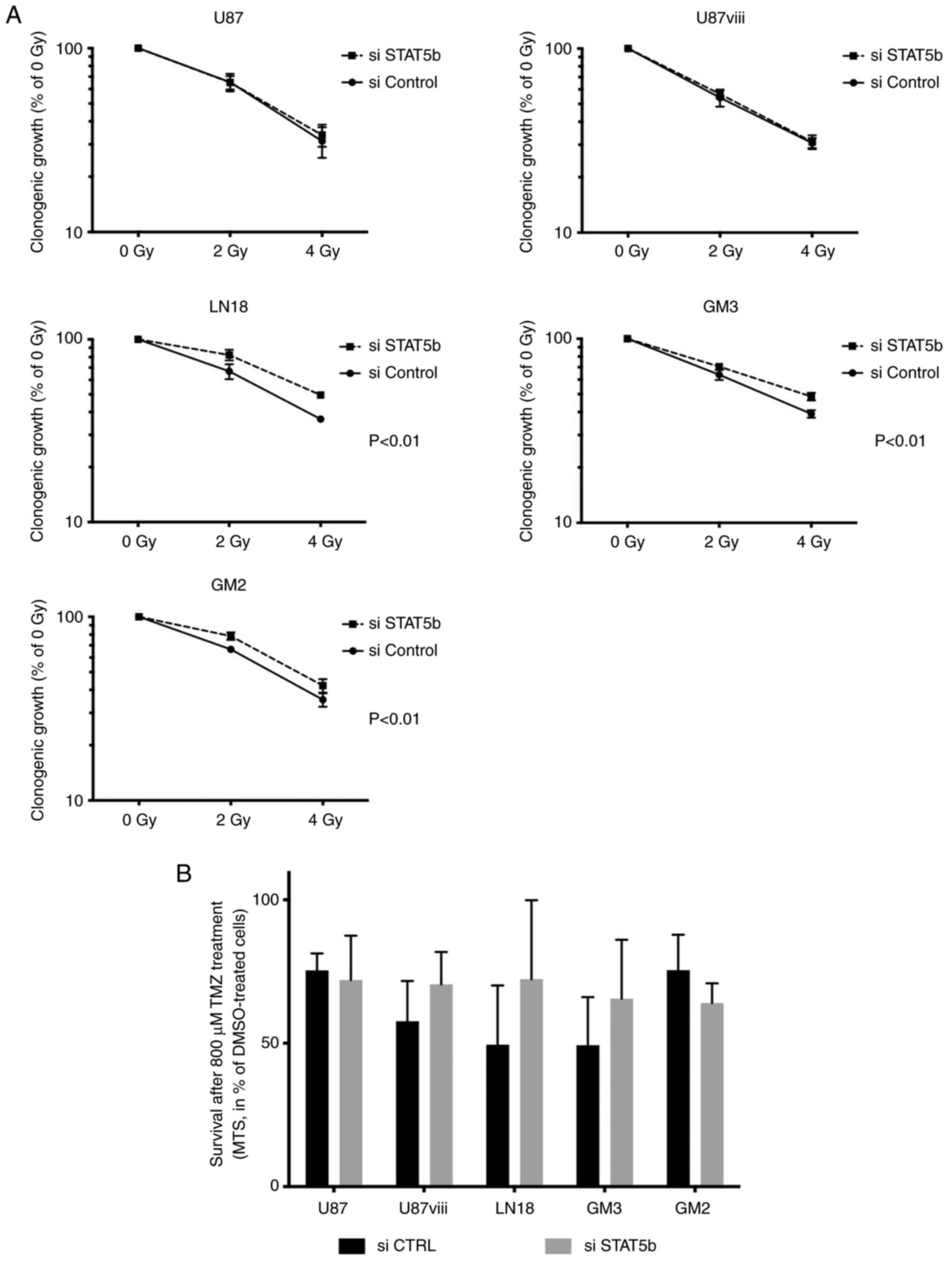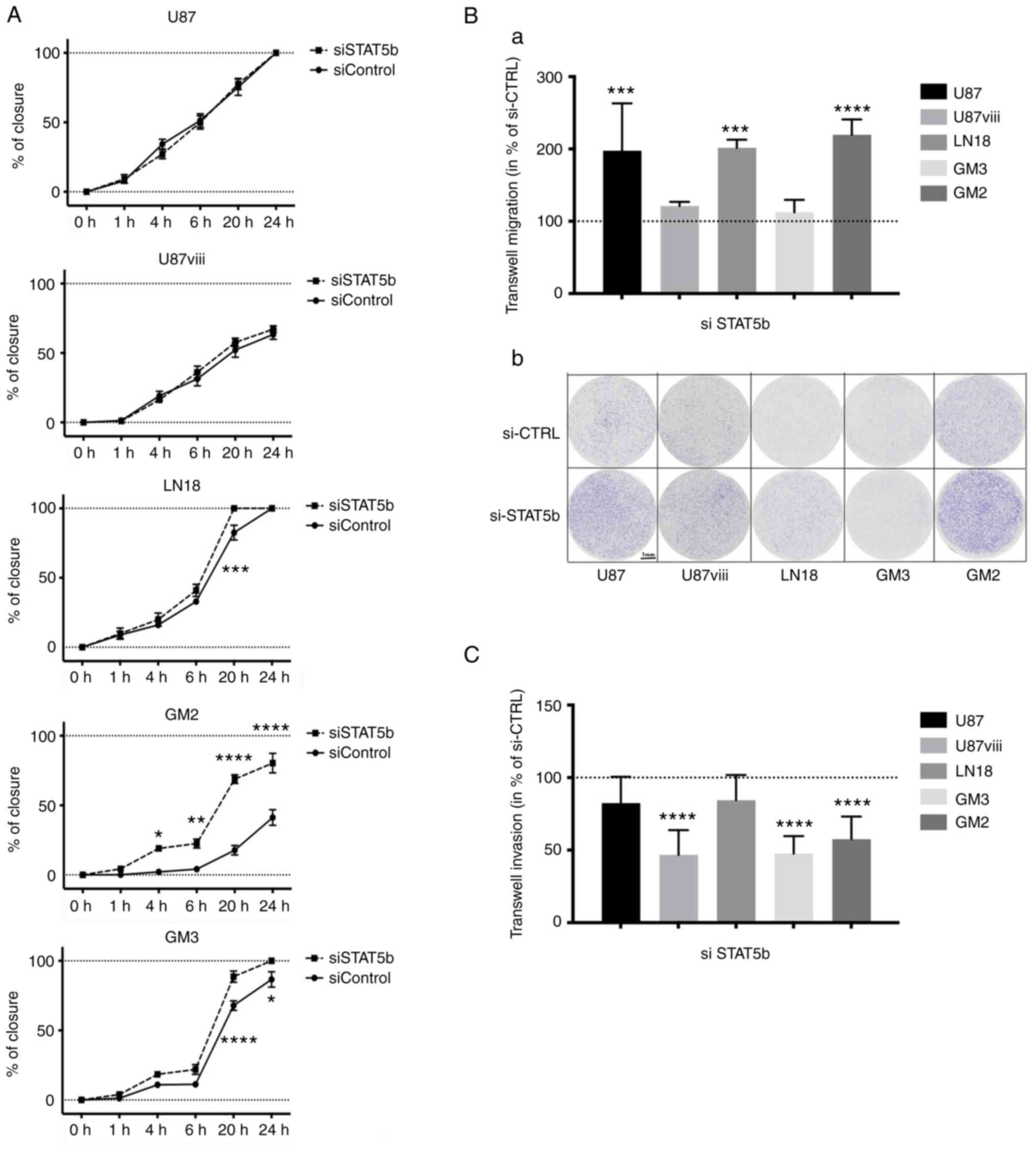|
1
|
Stupp R, Mason WP, van den Bent MJ, Weller
M, Fisher B, Taphoorn MJ, Belanger K, Brandes AA, Marosi C, Bogdahn
U, et al: Radiotherapy plus concomitant and adjuvant temozolomide
for glioblastoma. N Engl J Med. 352:987–996. 2005. View Article : Google Scholar : PubMed/NCBI
|
|
2
|
Stupp R, Taillibert S, Kanner AA, Kesari
S, Steinberg DM, Toms SA, Taylor LP, Lieberman F, Silvani A, Fink
KL, et al: Maintenance therapy with tumor-treating fields plus
temozolomide vs temozolomide alone for glioblastoma: A randomized
clinical trial. JAMA. 314:2535–2543. 2015. View Article : Google Scholar : PubMed/NCBI
|
|
3
|
Bell EH, Pugh SL, McElroy JP, Gilbert MR,
Mehta M, Klimowicz AC, Magliocco A, Bredel M, Robe P, Grosu AL, et
al: Molecular-based recursive partitioning analysis model for
glioblastoma in the temozolomide era: A correlative analysis based
on NRG oncology RTOG 0525. JAMA Oncol. 3:784–792. 2017. View Article : Google Scholar : PubMed/NCBI
|
|
4
|
Eckel-Passow JE, Lachance DH, Molinaro AM,
Walsh KM, Decker PA, Sicotte H, Pekmezci M, Rice T, Kosel ML,
Smirnov IV, et al: Glioma groups based on 1p/19q, IDH, and TERT
promoter mutations in tumors. N Engl J Med. 372:2499–2508. 2015.
View Article : Google Scholar : PubMed/NCBI
|
|
5
|
Maurer B, Kollmann S, Pickem J,
Hoelbl-Kovacic A and Sexl V: STAT5A and STAT5B-twins with different
personalities in hematopoiesis and leukemia. Cancers (Basel).
11:17262019. View Article : Google Scholar
|
|
6
|
Kuo YH, Chen YT, Tsai HP, Chai CY and Kwan
AL: Nucleophosmin overexpression is associated with poor survival
in astrocytoma. APMIS. 123:515–522. 2015. View Article : Google Scholar : PubMed/NCBI
|
|
7
|
Liang QC, Xiong H, Zhao ZW, Jia D, Li WX,
Qin HZ, Deng JP, Gao L, Zhang H and Gao GD: Inhibition of
transcription factor STAT5b suppresses proliferation, induces G1
cell cycle arrest and reduces tumor cell invasion in human
glioblastoma multiforme cells. Cancer Lett. 273:164–171. 2009.
View Article : Google Scholar
|
|
8
|
Latha K, Li M, Chumbalkar V, Gururaj A,
Hwang Y, Dakeng S, Sawaya R, Aldape K, Cavenee WK, Bogler O and
Furnari FB: Nuclear EGFRvIII-STAT5b complex contributes to
glioblastoma cell survival by direct activation of the Bcl-XL
promoter. Int J Cancer. 132:509–520. 2013. View Article : Google Scholar :
|
|
9
|
Cao S, Wang C, Zheng Q, Qiao Y, Xu K,
Jiang T and Wu A: STAT5 regulates glioma cell invasion by pathways
dependent and independent of STAT5 DNA binding. Neurosci Lett.
487:228–233. 2011. View Article : Google Scholar
|
|
10
|
Lin JX and Leonard WJ: The role of Stat5a
and Stat5b in signaling by IL-2 family cytokines. Oncogene.
19:2566–2576. 2000. View Article : Google Scholar : PubMed/NCBI
|
|
11
|
Chumbalkar V, Latha K, Hwang Y, Maywald R,
Hawley L, Sawaya R, Diao L, Baggerly K, Cavenee WK, Furnari FB and
Bogler O: Analysis of phosphotyrosine signaling in glioblastoma
identifies STAT5 as a novel downstream target of ΔEGFR. J Proteome
Res. 10:1343–1352. 2011. View Article : Google Scholar : PubMed/NCBI
|
|
12
|
Roos A, Dhruv HD, Peng S, Tuncali S,
Pineda M, Millard N, Mayo Z, Eschbacher JM, Loftus JC, Winkles JA
and Tran NL: EGFRvIII-Stat5 signaling enhances glioblastoma cell
migration and survival. Mol Cancer Res. 16:1185–1195. 2018.
View Article : Google Scholar : PubMed/NCBI
|
|
13
|
Tan C, Dai Y, Liu X, Zhao G, Wang W, Li J
and Qi L: STAT5A induced LINC01198 promotes proliferation of glioma
cells through stabilizing DGCR8. Aging (Albany NY). 12:5675–5692.
2020. View Article : Google Scholar
|
|
14
|
Zhang Y, Kim J, Mueller AC, Dey B, Yang Y,
Lee DH, Hachmann J, Finderle S, Park DM, Christensen J, et al:
Multiple receptor tyrosine kinases converge on microRNA-134 to
control KRAS, STAT5B, and glioblastoma. Cell Death Differ.
21:720–734. 2014. View Article : Google Scholar : PubMed/NCBI
|
|
15
|
Sawada T, Arai D, Jing X, Miyajima M,
Frank SJ and Sakaguchi K: Molecular interactions of EphA4, growth
hormone receptor, Janus kinase 2, and signal transducer and
activator of transcription 5B. PLoS One. 12:e01807852017.
View Article : Google Scholar : PubMed/NCBI
|
|
16
|
Liu YL, Liu PF, Liu HE, Ma LX and Li G:
Association between STAT5 polymorphisms and glioblastoma risk in
Han Chinese population. Pathol Res Pract. 210:582–585. 2014.
View Article : Google Scholar : PubMed/NCBI
|
|
17
|
Televantou D, Karkavelas G, Hytiroglou P,
Lampaki S, Iliadis G, Selviaridis P, Polyzoidis KS, Fountzilas G
and Kotoula V: DARPP32, STAT5 and STAT3 mRNA expression ratios in
glioblastomas are associated with patient outcome. Pathol Oncol
Res. 19:329–343. 2013. View Article : Google Scholar
|
|
18
|
Berendsen S, Spliet WGM, Geurts M, Van
Hecke W, Seute T, Snijders TJ, Bours V, Bell EH, Chakravarti A and
Robe PA: Epilepsy associates with decreased HIF-1α/STAT5b signaling
in glioblastoma. Cancers (Basel). 11:412019. View Article : Google Scholar
|
|
19
|
Berendsen S, Varkila M, Kroonen J, Seute
T, Snijders TJ, Kauw F, Spliet WG, Willems M, Poulet C, Broekman
ML, et al: Prognostic relevance of epilepsy at presentation in
glioblastoma patients. Neuro Oncol. 18:700–706. 2016. View Article : Google Scholar :
|
|
20
|
Robe PA, Bentires-Alj M, Bonif M, Rogister
B, Deprez M, Haddada H, Khac MT, Jolois O, Erkmen K, Merville MP,
et al: In vitro and in vivo activity of the nuclear factor-kappaB
inhibitor sulfasalazine in human glioblastomas. Clin Cancer Res.
10:5595–5603. 2004. View Article : Google Scholar : PubMed/NCBI
|
|
21
|
Fan QW, Cheng CK, Gustafson WC, Charron E,
Zipper P, Wong RA, Chen J, Lau J, Knobbe-Thomsen C, Weller M, et
al: EGFR phosphorylates tumor-derived EGFRvIII driving STAT3/5 and
progression in glioblastoma. Cancer Cell. 24:438–449. 2013.
View Article : Google Scholar : PubMed/NCBI
|
|
22
|
Yang C, Huang W, Yan L, Wang Y, Wang W,
Liu D and Zuo X: Downregulation of the expression of B-cell
lymphoma-extra large by RNA interference induces apoptosis and
enhances the radiosensitivity of nonsmall cell lung cancer cells.
Mol Med Rep. 12:449–455. 2015. View Article : Google Scholar : PubMed/NCBI
|
|
23
|
Hsia DA, Mitra SK, Hauck CR, Streblow DN,
Nelson JA, Ilic D, Huang S, Li E, Nemerow GR, Leng J, et al:
Differential regulation of cell motility and invasion by FAK. J
Cell Biol. 160:753–767. 2003. View Article : Google Scholar : PubMed/NCBI
|
|
24
|
Gressot LV, Doucette TA, Yang Y, Fuller
GN, Heimberger AB, Bögler O, Rao A, Latha K and Rao G: Signal
transducer and activator of transcription 5b drives malignant
progression in a PDGFB-dependent proneural glioma model by
suppressing apoptosis. Int J Cancer. 136:2047–2054. 2015.
View Article : Google Scholar :
|
|
25
|
Bredel M, Scholtens DM, Yadav AK, Alvarez
AA, Renfrow JJ, Chandler JP, Yu IL, Carro MS, Dai F, Tagge MJ, et
al: NFKBIA deletion in glioblastomas. N Engl J Med. 364:627–637.
2011. View Article : Google Scholar
|


















